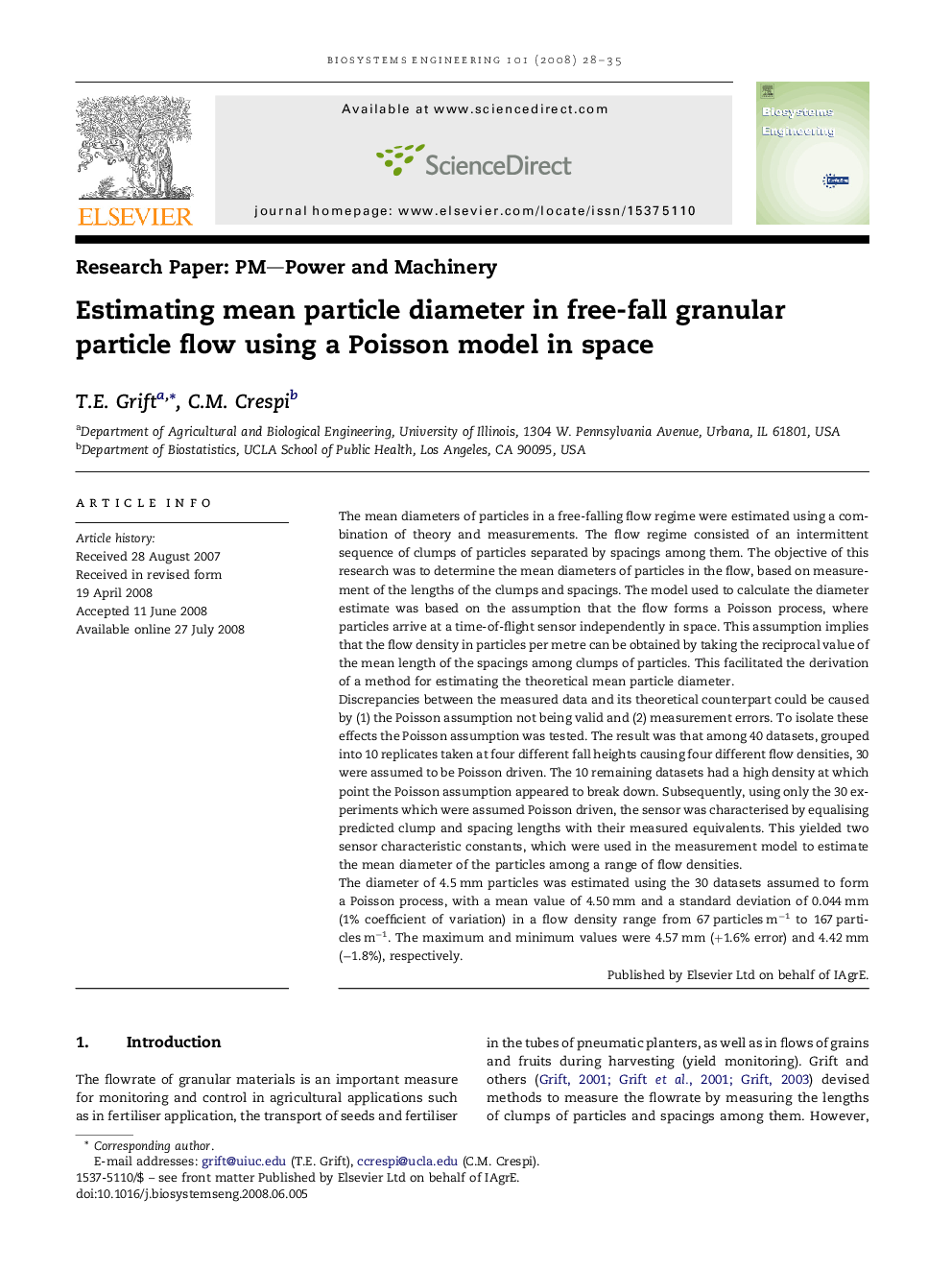| Article ID | Journal | Published Year | Pages | File Type |
|---|---|---|---|---|
| 1712116 | Biosystems Engineering | 2008 | 8 Pages |
The mean diameters of particles in a free-falling flow regime were estimated using a combination of theory and measurements. The flow regime consisted of an intermittent sequence of clumps of particles separated by spacings among them. The objective of this research was to determine the mean diameters of particles in the flow, based on measurement of the lengths of the clumps and spacings. The model used to calculate the diameter estimate was based on the assumption that the flow forms a Poisson process, where particles arrive at a time-of-flight sensor independently in space. This assumption implies that the flow density in particles per metre can be obtained by taking the reciprocal value of the mean length of the spacings among clumps of particles. This facilitated the derivation of a method for estimating the theoretical mean particle diameter.Discrepancies between the measured data and its theoretical counterpart could be caused by (1) the Poisson assumption not being valid and (2) measurement errors. To isolate these effects the Poisson assumption was tested. The result was that among 40 datasets, grouped into 10 replicates taken at four different fall heights causing four different flow densities, 30 were assumed to be Poisson driven. The 10 remaining datasets had a high density at which point the Poisson assumption appeared to break down. Subsequently, using only the 30 experiments which were assumed Poisson driven, the sensor was characterised by equalising predicted clump and spacing lengths with their measured equivalents. This yielded two sensor characteristic constants, which were used in the measurement model to estimate the mean diameter of the particles among a range of flow densities.The diameter of 4.5 mm particles was estimated using the 30 datasets assumed to form a Poisson process, with a mean value of 4.50 mm and a standard deviation of 0.044 mm (1% coefficient of variation) in a flow density range from 67 particles m−1 to 167 particles m−1. The maximum and minimum values were 4.57 mm (+1.6% error) and 4.42 mm (−1.8%), respectively.
